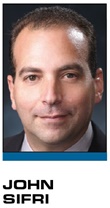With teams spending millions of dollars on athletes who often spend just a few hours a week in an actual game, professional football may appear to be something of a spendthrift enterprise. It’s not. I run business information systems for the Houston Texans, and it is that office’s job to make sure that we provide efficiencies to the organization under strict spending constraints.
Such efficiencies can be hard-fought now that professional football is a $10 billion-a-year industry supporting hundreds of businesses beyond the core franchise. Game tickets are no longer sold at the gate; they are routed through independent brokers. Stadium concession deals are worth millions of dollars. There are endorsement deals, health plans, pension plans, broadcast rights — and let’s not forget the stadium billboard, security and maintenance contracts.
Business information systems must keep track of it all. Simply paying a vendor bill — and there are hundreds each month — can involve a dozen or more approvals and signatures. Multiply that process by the dozens of different departments and business enterprises involved in any professional football team, and you are spending hundreds of thousands of dollars keeping track of paperwork each month.
Three years ago, the Texans started to look at electronic records management systems to streamline some of these operations. The Texans are a young team, and since our start we’ve computerized certain areas of operations, like payroll and accounting. But these programs are more for number-crunching, not dealing with whole documents, like the myriad invoices that come in all shapes, sizes and formats. It was the cumbersome paperwork in this area of operations — accounts payable — that first pushed us to see if electronic records management could turn all these different documents into a seamless flow of information throughout the organization.
After mulling various technologies, we opted for a Laserfiche enterprise content management system by Texas-based +ImageNet Consulting. The system’s nonproprietary software made it easy to integrate with our existing software systems, and the user-friendly platform made it easy to train staff on its use. Having a local reseller was a huge help when it came to tech support. It was not long before the system was chopping hundreds of staff hours off the time it took to process all those monthly purchase orders and invoices.
Much more important, the success and ease of the AP rollout helped my department set in place the framework for automating similar administrative processes clogging operations in almost every other area of the Texans’ back office. We created a centralized business contracts filing system that replaced the individual folders we used for each contract on file. We created workflows to track the team’s capital fund investment transactions. Our human resources department has been added to the same centralized filing system with an electronic forms feature that has turned tracking a steady stream of personnel changes into a paint-by-the-numbers process done almost entirely by Laserfiche.
Next we turned our attention to the player-related aspects of business operations. We created an electronic filing system for player records such as contracts and other legal documents. We built a workers’ compensation workflow to handle insurance claims and processing player claims. Most recently, we created a process to capture the questionnaire and release forms that are required for background checks on NFL draft-eligible players. Through this process we’re getting these questionnaires and release forms back in half the time it used to take. This leaves our security personnel more time to evaluate background checks to protect our team brand.
Along the way we enhanced security in both front- and back-office operations with system features that track who looks at which documents and when. We have now automated the scheduling behind the destruction of documents the organization no longer needs to hold. All this automation has provided perhaps the single greatest benefit of all: It has eliminated much of the guesswork behind keeping track of the monumental business enterprise that the Texans have become.
It has not all been easy, and for other teams that are looking to get started with document management, I offer the following advice: Start by talking to the departments with the most-pressing document management needs. See what types of data they’re dealing with, then create, design and implement a solution that helps them address those needs. Once a few departments are on board, take the lessons from those efforts and use them to help figure out how best to design a single system that can meet the needs of as many other departments in your organization as possible.
The Texans’ IT department may be a long way from the gridiron, but what we do in our office directly affects efficiencies realized in our organization as a whole and contributes to our company’s focus of becoming the most respected and valuable sports franchise in the world. In today’s world of professional football, how well you play the game off the field can be just as important to winning as how well you play on the field. And winning in professional sports is everything.
John Sifri is director of business information systems for the Houston Texans.




